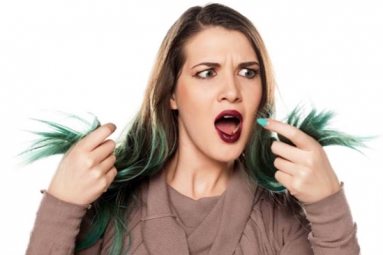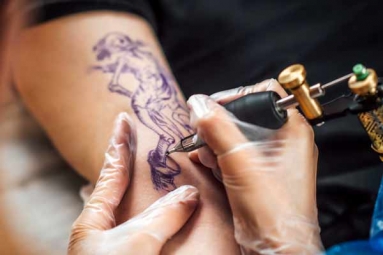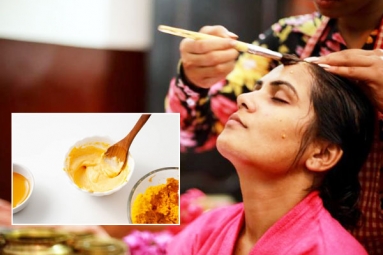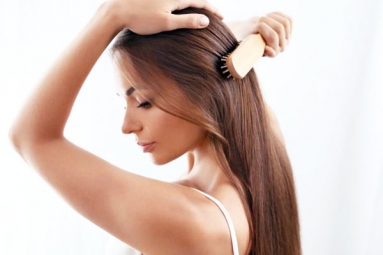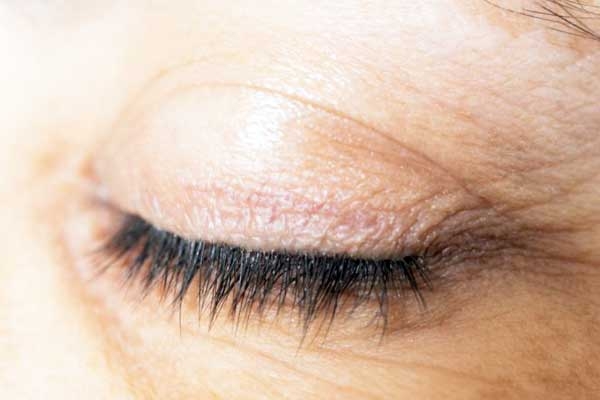
(Image source from: Canva.com)
Dandruff can be annoying, especially if it returns in the winter. These white scales can stand out on the shoulders and cause discomfort against dark winter clothing. However, over the years discussing dandruff has become the norm and people have become more open to discussing solutions, treatments and preventative measures to keep it under control. While dandruff usually appears on the scalp, it can also appear on other areas such as the eyebrows, mustache and nose! But do you know what dandruff is on the eyelashes? Unlike other areas, dandruff is barely visible to the naked eye and can be a serious threat if left untreated. Contact lens wearers should watch out for scales on their eyelids to avoid infections.
Dandruff, also known as blepharitis, is a common eye condition that causes a scaly crust to form on the eyelids. This happens when there is too much bacteria at the base of the eyelids or when the oil glands become clogged and irritated. This is a very common phenomenon and is caused by excessive oil production or fungus. Diseases such as seborrheic dermatitis or mite infestation (Demodex) can also lead to this problem. According to experts, this usually happens in winter or during seasonal changes. The habit of sleeping with eyeliner and mascara can also cause dandruff.
Although eyelid dandruff may seem unnoticeable, symptoms include itching, redness or inflammation of the eyelid, itching or burning of the eye, and loose scales at the base of the eyelashes.
Thin skin or oily discharge around the edges of the eyelids.
Smooth eyelashes
My eyelids were stuck together in the morning
Itching or burning
Red, swollen eyelids
Watery eyes
Photosensitivity
Dandruff on the eyelashes is not just a cosmetic problem. It can pose a serious threat to your eye health. There is a risk of chronic inflammation and inflammatory diseases such as redness, eyelash loss, dry eyes, corneal damage, as well as swelling and hailstones. If left untreated, dandruff can increase the risk of chronic eye infections such as conjunctivitis and keratitis (inflammation of the cornea). Excessive rubbing of the eyes due to irritation can further weaken the cornea and cause conditions such as keratoconus (an eye disease in which the cornea becomes thin and cone-shaped). Anyone who wears contact lenses should pay particular attention to eye hygiene. If you have dandruff, you are more susceptible to eye infections. Scales and bacteria from these scales can accumulate on the lenses and become a suitable source of infection. Maintain contact lens hygiene regularly. Treating blepharitis (eyelash dandruff) by gently washing the eyelids can help reduce the risk and maintain eye health. The main measures for the prevention and treatment of blepharitis are: dangerous:
Clean your eyelashes regularly with a mild cleanser
Avoid using expired cosmetics
Remove eye makeup before going to bed
Dandruff can cause dandruff (so treat dandruff first)
Avoid sharing cosmetics
If you notice or have symptoms of dandruff, see an eye doctor. Depending on the severity of the disease, a specialist may prescribe medication (eye drops), creams or even steroids. To effectively treat this problem, we also use eyelid scrubs or eyelid wipes containing tea tree oil. Dandruff is often caused by dandruff in the hair or scalp and can also be dangerous for the eyes. You may be embarrassed, but it's not just a matter of pride. Dandruff on the eyebrows can be caused by dandruff (seborrheic eczema), contact dermatitis (allergic reactions), psoriasis, or dry skin. Scale residue from the eyebrows can get into the eyes and cause irritation, redness and infection. Experts say dandruff that accompanies eyelid inflammation can worsen dry eye symptoms and cause blepharitis (eyelash dandruff). Good eyebrow hygiene and treating dandruff before it develops into a full attack can help prevent dandruff.
Here are some expert-approved tips for preventing and treating eyebrow dandruff:
If you have dandruff on your scalp, treat it with a medicated shampoo.
Avoid washing your face, eyebrows and scalp too often and use mild cleansers.
Use moisturizers and anti-itch creams with natural ingredients like tea tree oil and aloe vera.
Avoid products and substances that can irritate the skin
Avoid plucking the eyebrow area
Cold compresses relieve inflammation and itching



